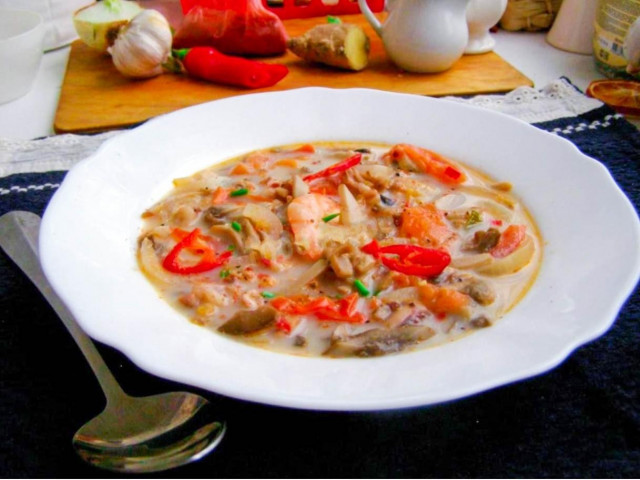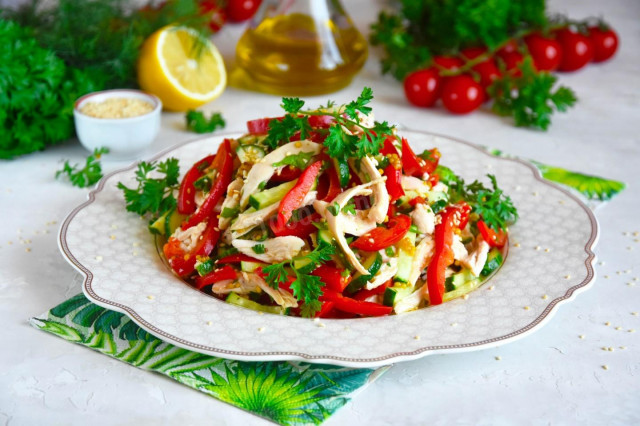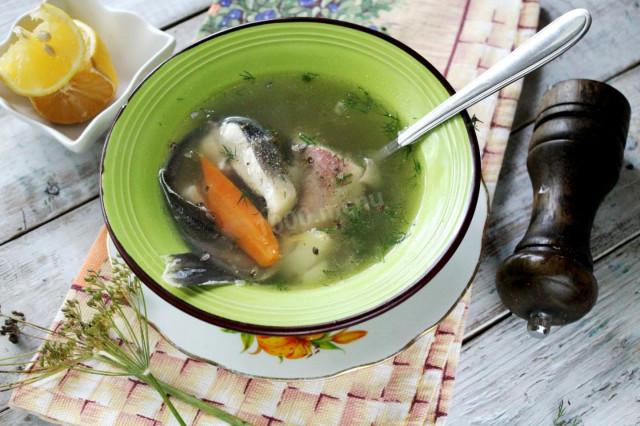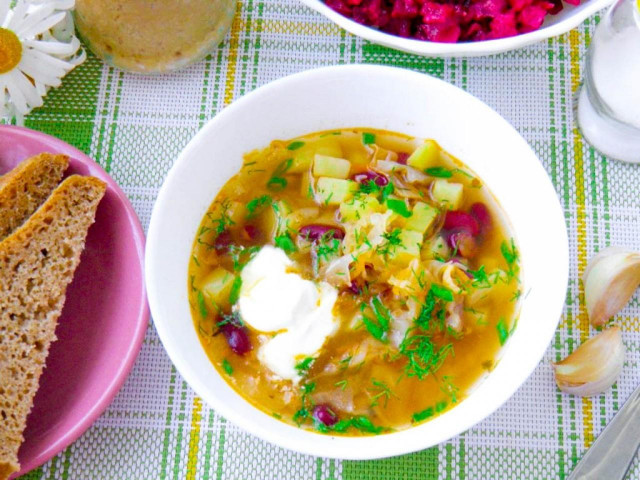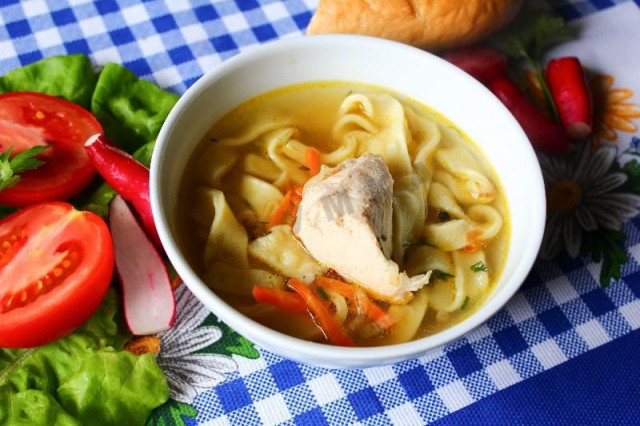Composition / ingredients
Step-by-step cooking
Step 1:
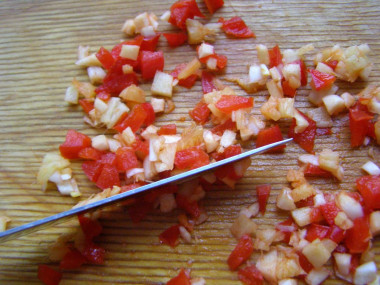
How to cook tom yam with coconut milk? Peel the garlic. Cut off the top layer from the ginger. Finely chop the chili pepper, garlic and ginger with a knife. Alternatively, you can pass garlic through a press, and grate ginger on a fine grater.
Step 2:

Put the pan on the stove in which you plan to cook the soup, pour oil into it, heat it well. Fry this slicing on it for a few minutes over medium heat, stirring constantly. Then reduce the heat and simmer the mixture for a couple more minutes.
Step 3:
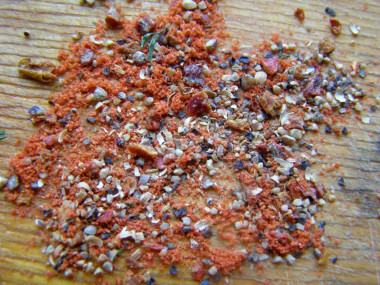
Mash the pepper peas coarsely, this can be easily done with a regular rolling pin. Combine pepper with paprika.
Step 4:
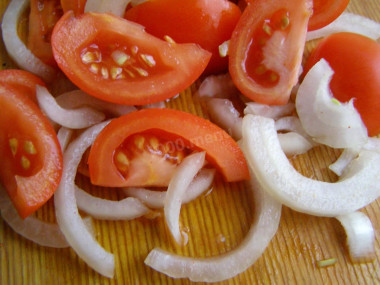
Peel the onion, cut into half rings, tomato into large slices.
Step 5:

Wash the champignons, dry them and cut them into strips.
Step 6:

Pour water into a saucepan with fried chili, garlic and ginger and bring it to a boil over medium heat.
Step 7:
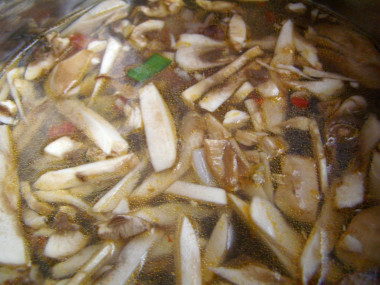
Then add lemongrass, seafood, onion and mushrooms to the pan. I took a ready—made sea cocktail, but you can also use individual seafood - shrimp, mussels, squid. Wait for boiling again and turn down the heat. Cook the soup for 8-10 minutes at a low boil.
Step 8:

At the end, add tomatoes, coconut milk, lemon zest and pepper with paprika, let the soup boil again. Try it and add salt to taste. After 2-3 minutes, the saucepan can be removed from the stove. Serve the soup hot, pouring on plates. Bon appetit!
And the number of ingredients, and their ratio, and the set can be varied to your taste.
If you do not have coconut milk, take regular or soy, dry, cream, etc.
You can try to buy spices and spices in the store that make the taste and aroma of the soup unique. And if there are none, then it's not difficult to prepare all this yourself. After all, products that are unusual for us change well available to us. So, instead of lime leaves, we take lemon zest, etc
.
Do not use forest mushrooms, otherwise you will get mushroom soup, because forest mushrooms will change the taste of the soup.
If the soup seems thick, dilute it with boiling milk. And if it is too thin, pour out part of the broth.
Important! Regardless of whether the amount of water for soup is indicated in the recipe or not, it is best to focus on your own preferences (thick or more liquid soup you like), as well as on the size of your pan and the products taken for cooking. Do not forget that the author has his own view on the amount of meat, potatoes, cereals and other ingredients in the soup, which may not coincide with yours. In practice, this means that if you are cooking for the first time, you should not cook a whole pot at once. Make a soup for tasting - for one or two people. To do this, reduce the amount of all ingredients according to the recipe to 1-2 servings, and take the amount of water from the calculation: from one cup per serving - if the soup is very thick, to 1.5-2 cups - if more liquid. Do not forget to take into account that part of the liquid will boil off during the cooking process. After tasting a small portion of soup, you can adjust both the amount of liquid and the proportions of ingredients to your taste. In the future, like most experienced housewives, you will be able to pour water for soup and lay the ingredients “by eye".
Since the degree of salinity, sweetness, bitterness, sharpness, acid, burning is individual for everyone, always add spices, spices and seasonings, focusing on your taste! If you put some of the seasonings for the first time, then keep in mind that there are spices that it is especially important not to shift (for example, chili pepper).
For cooking, it is better to use filtered or bottled water that is neutral to taste. If you use tap water, keep in mind that it can give the dish an unpleasant characteristic taste.
Caloric content of the products possible in the composition of the dish
- Onion - 41 kcal/100g
- Tomatoes - 23 kcal/100g
- Champignons - 24 kcal/100g
- Garlic - 143 kcal/100g
- Ginger - 80 kcal/100g
- Dry ginger - 347 kcal/100g
- Pickled ginger - 51 kcal/100g
- Vegetable oil - 873 kcal/100g
- Coconut milk - 230 kcal/100g
- Black pepper peas - 255 kcal/100g
- Salt - 0 kcal/100g
- Water - 0 kcal/100g
- Paprika - 289 kcal/100g
- Lemon zest - 47 kcal/100g
- Chili pepper - 40 kcal/100g
- Lemongrass - 111 kcal/100g
- Sea cocktail - 95 kcal/100g

